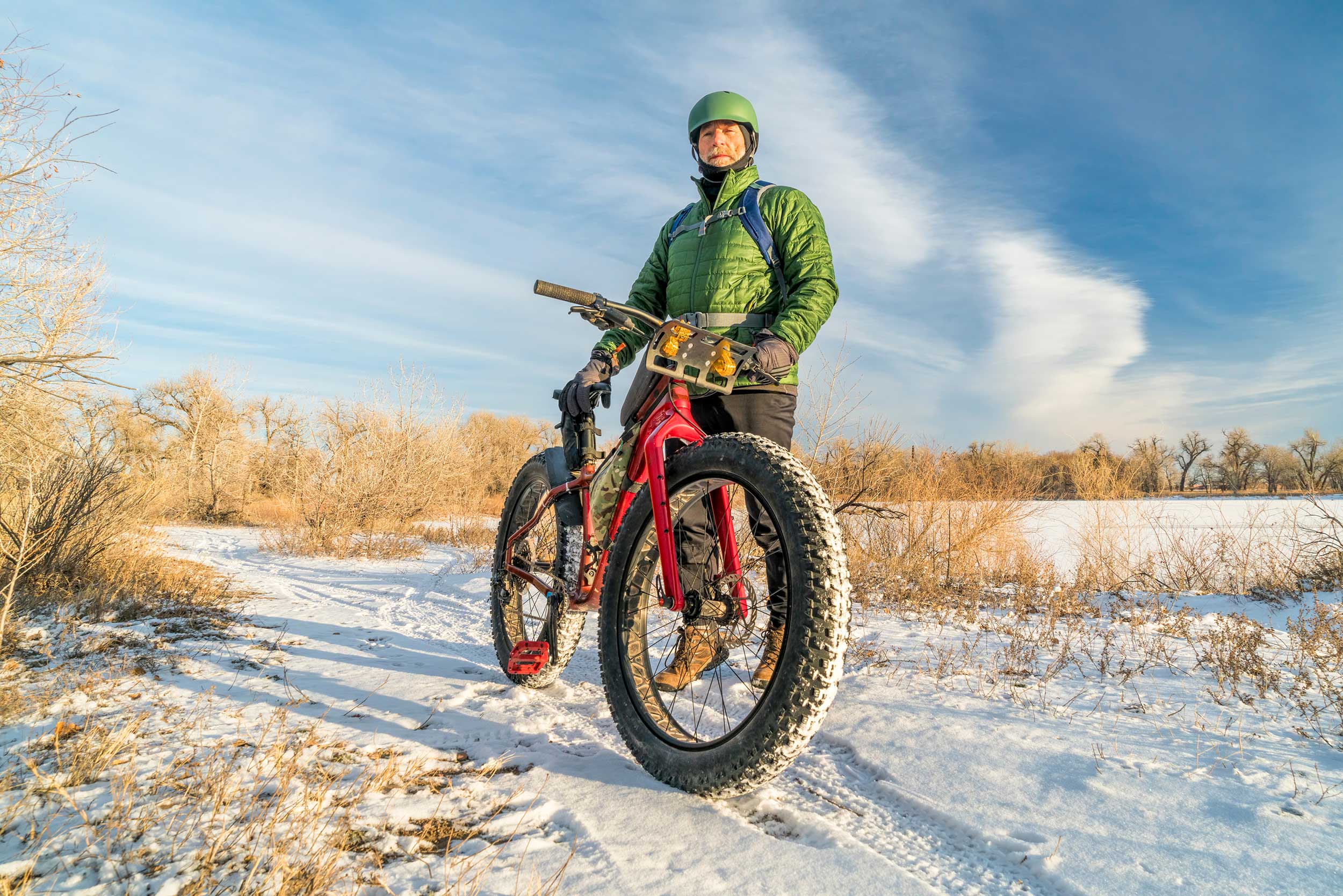Knowing what to wear is an essential part of staying safe when you choose to ride your bike in the cold. Here we give you some tips on how to stay comfortable and warm as well as explaining how to choose the best bike riding gear for winter.
What kind of bike do you ride in cold areas
I can’t tell you what kind of bike is good for cold areas. I think it’s up to your personal preference. However, if you’re thinking about riding a bike during winter, there are some things to consider. First, the road bike is lighter and easier to pedal than any other types of bikes. That means you’ll be able to go up a slope faster. Also, you need to take care of your tires, as they can easily puncture in the winter.
In the winter, I always ride a road bike. For me, it’s because of ease and comfort. In addition to being lightweight and comfortable, you can wear a warm jacket with a thick sweater underneath – which is cozy even if the temperature drops below 0 degrees Celsius. However, I also have a lack of courage because my neighborhood is a mountainous area. If I had more courage, I would ride a mountain bike because it is more stable.
Tires are a big factor when it comes to cold weather
it comes to biking in winter. Not just any tire can provide enough traction and durability when the temperature drops and the streets get slick with ice and snow. There are three common types of tires depending on what type of conditions you’ll be riding in:
- Mountain Bike Tire: best for loose surfaces such as sand, mud or loose gravel.
- Road Bike Tire: for hard surfaces mainly, either dry or wet. It has a thin tire that rolls fast but doesn’t give much traction to the ground while riding.
- City Bike Tire: this kind of tires is preferred by people who usually ride on roads because it’s thin and can easily move forward, without being stuck in the traffic.
How to dress for cold weather riding (layers, layering principles, gloves)
The key to cold-weather riding is layers. You want a close-fitting base layer, next a mid-layer like insulating fleece (or Poles – as I call them), and finally an outer shell such as windproof or waterproof/breathable nylon or Gore-Tex. The key question that you should be asking yourself is:
“How many layers do I need?”
The answer is, “It depends.” On the coldest day of the year (for my locale), with the wind-chill factored in, it can be as cold as -1°C (30.2 Fahrenheit) or 29° F (-2°C). So I wear:
• A close-fitting base layer top of long-sleeved shirt or turtleneck and long underwear (top and bottom).
• Over that is my Poles, made with “polar fleece” which is highly windproof.
• On top of that goes my waterproof/breathable shell jacket .
• Over that goes my Gore-Tex over trousers.
And I wear gloves with a lighter pair underneath, or even fingerless gloves over the top of the heavier ones.
Waterproof/breathable fabrics are going to be great for keeping you dry from rain or snow, but they won’t do anything to keep out the cold. That’s why you need a shell layer of some sort on top of them, as well as insulating layers underneath (or Poles).
I’m sure that someone out there has a better way of dressing for cold weather riding than I do. However, I find the more layers I wear, the less likely I am to get sweaty and chilled if my core temperature is warm enough from exertion.
Bring in the age factor
My point in telling you all this is that when I was younger, it never occurred to me to vary my layering according to the temperature, but rather chose my outfit based on the time of day and how intense the sun was (light clothing early morning and late evening and sunscreen during the day). But as I’ve gotten older, the very act of exertion like riding my bike on hilly terrain can cause me to sweat heavily even when it’s quite cold outside. If you’re not aware of that happening to you, then you might end up with a terrible chill after some time outdoors if your base layer is soaked through.
Feet and hands get cold first
In addition to wearing the right type of clothing for cold weather riding, you need to make sure that you keep your feet and hands warm and protected from the elements. Dressing in layers is important for this, too. You can always take off a shell layer if you start to overheat , but you don’t want bare arms or legs; they’re going to be chilly even if it’s not raining/snowing/foggy at all.
When dressing your hands, I find that the best thing to do is start with a pair of silk or other thin liners and go from there. You can buy those sorts of gloves at many local sports stores, but if they don’t have any, you also can use mittens . I don’t wear mittens because I feel less control over brakes. But if you’re riding in a very cold weather, that might be your only option.
The key for keeping your hands warm is to have as much insulation as possible with as few holes as possible, so if you wear mittens, the fewer seams they have on them the better. It’s also a good idea to wear a thin glove underneath your mitten shells — at least that way your hands will be protected if it starts raining or snowing and you need to pull off a shell layer.
The same is true for your feet, too. You want a pair of thin socks as a base layer with a thicker pair over them and then some sort of booties on top of that to keep the warmth in.
Choosing the right clothing
The first thing to consider when deciding what to wear is that your clothes need to keep you warm but also allow sweat to escape. If you are wearing too many layers of clothing then perspiration cannot evaporate and this will make you feel cold and clammy. Therefore, it is vital for your biking clothes to be breathable.
Choose the right base layer
The first layer on your skin needs to be a good wicking fabric so that sweat can evaporate and you stay warm, dry and comfortable. A great material for these clothes is polyester because it is very light and has excellent wicking properties. On extra cold days some people like to wear thermal underwear which you can buy from many sports shops.
Add cycling-specific features
Once you have chosen your base layers the next step is to choose a range of cycling specific clothes to go on top. When choosing these items remember that they need to be compatible with your bike and other accessories. For example, if you are going out for a ride in the mountains with a backpack you need to think about whether your clothes will fit under or over your rucksack straps. You can also choose items that are compatible with other biking essentials like cycling helmets, shoes and padding.
So how do these features affect what you wear?
Vents – allow moisture to escape from clothing
Pockets – allow storage of essentials like food and phones
Reflective panels – ensure you remain visible to other road users
Rucksack compatibility – choose cycling clothes that fit over the straps of your backpack
Warmth/insulation – determines what you will wear underneath
Fabric composition – washable, wicking, quick drying…
How about your head and face
It is inevitable that when it comes to winter cycling, your head will get cold. So what options do we have? We could invest in a big, thick hat to keep the cold out. That is an option, of course, but you will look a bit daft wearing a beanie on your head when it’s really sunny outside or if you are going indoors after your ride.
Alternatively, we could go for the headband/ear warmer combo. This is something that is becoming increasingly popular in the winter months. However, it can be quite uncomfortable to wear one of these all day long if you are cycling around a lot, plus they will only cover your forehead and the back half of your head.
So what’s another option?
If safety is something that concerns you while cycling in winter then wearing a helmet is probably the most sensible choice. While wearing a helmet won’t keep you warm, they will work in your favor when it comes to keeping all of my head protected from the cold winter winds.
There are several helmets on the market that have built in cycling visors already, so if this is something you are interested in then take a look online and you should find a brand that meets your needs.
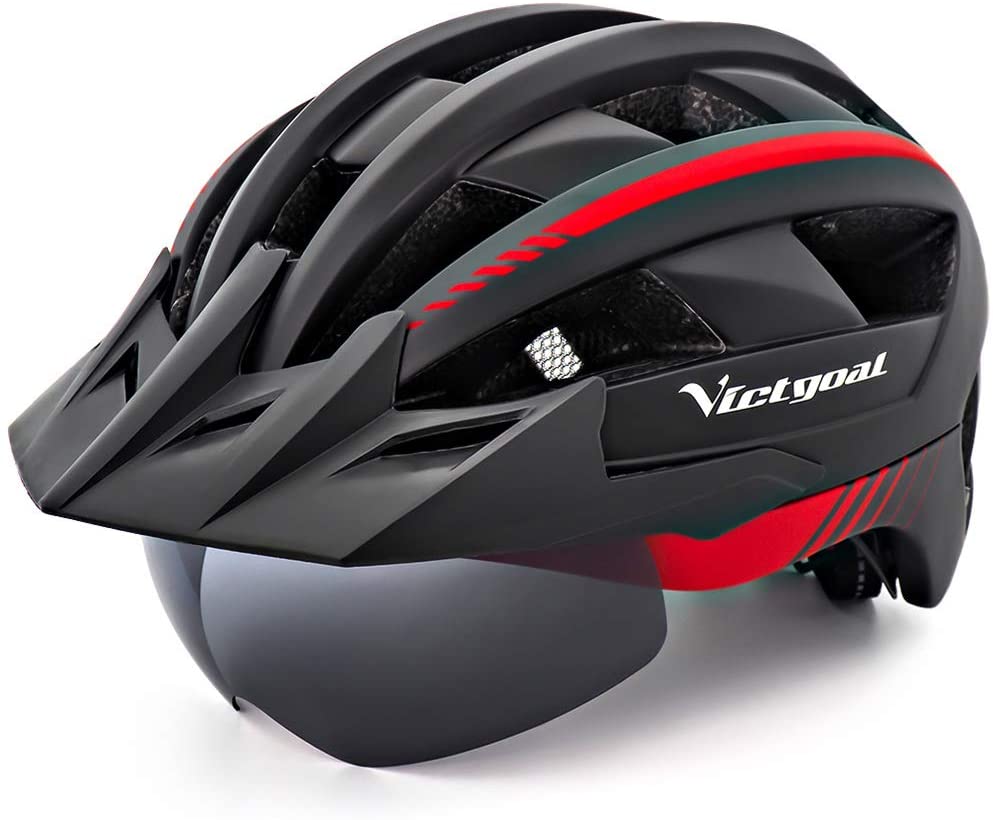
Cycling skull caps are another option, but they only provide limited protection from the elements and will not be as effective as a visor. But if you feel comfortable you can wear one under your helmet.
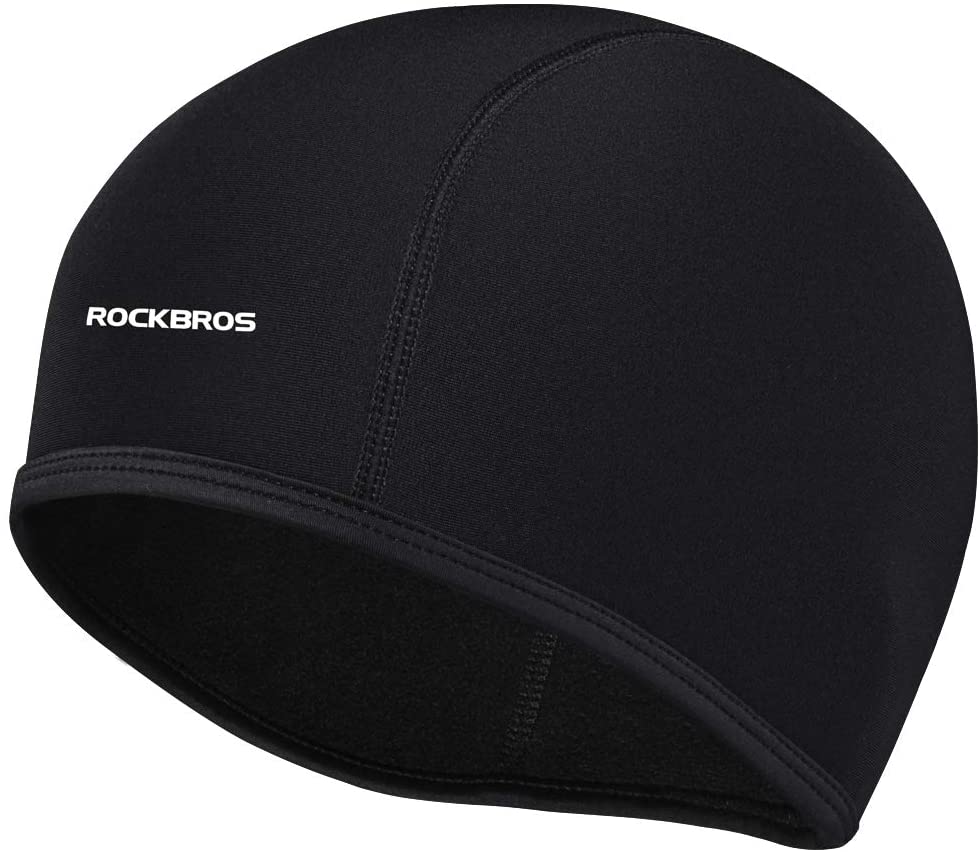
If this is something that doesn’t interest you then there are plenty of other options available for people like yourself who don’t want to invest $$$ into a new helmet just for the sake of keeping their head warm in winter. You could go for a hat with ear flaps, but again these usually only cover half your head and will be uncomfortable when worn all day long (And you probably are not able to wear helmet over that).
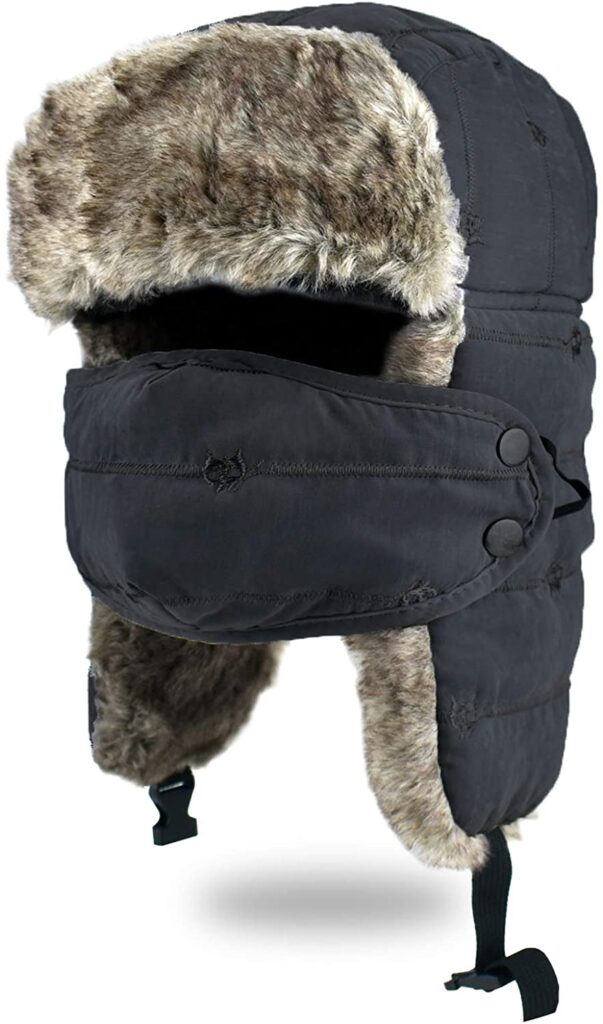
Alternatively you could try putting on one of those neck gaiters (the high-vis ones that runners use). These are cheap, effective and will keep you warm.
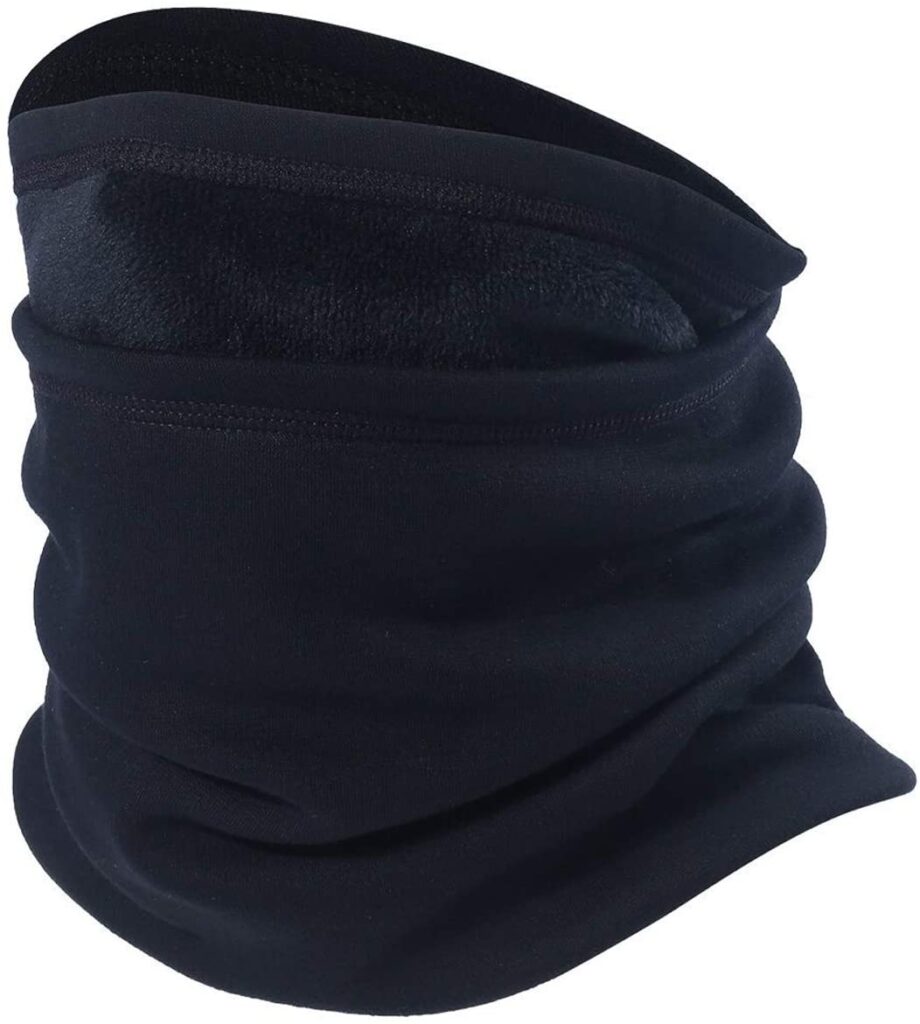
What about mouth warmth?
Keeping the wind out of your face is another matter entirely. Wearing a balaclava can make it very hard to breathe at times. For this reason I don’t recommend them when cycling, unless you have been specifically advised to use one by a doctor.

If you are looking for something that will cover your nose to keep the cold out then wearing goggles (or glasses if they fit under your helmet) might be an option. These can make it difficult to see in certain weather conditions, however, so take care before setting off on your journey.
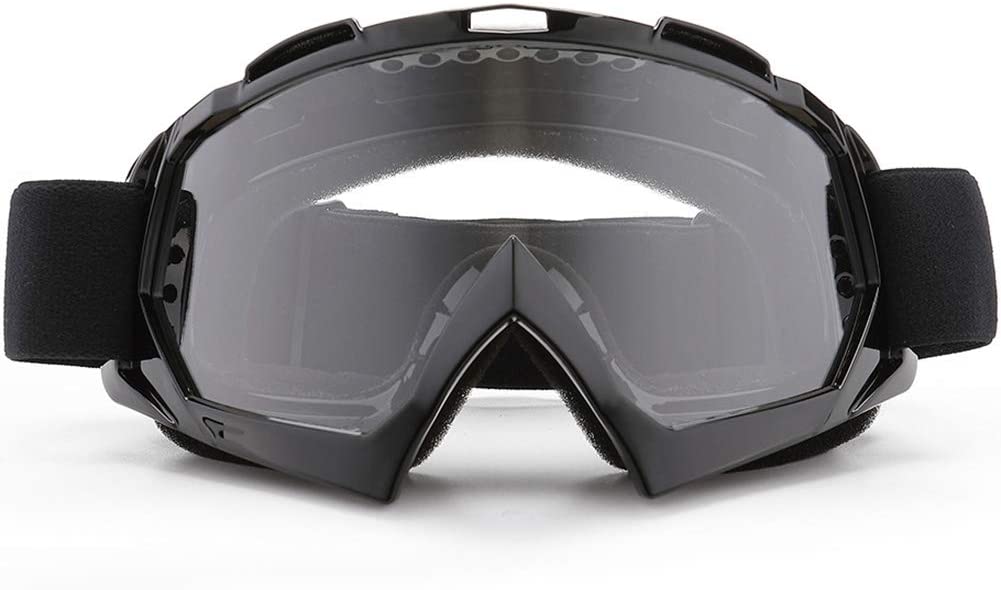
There are also cycling masks available that will give your face extra warmth. These are great for keeping the cold out, but can make it difficult to breathe in certain scenarios.

If none of these ideas appeal to you then take a look at some of the other options below:
The best thing I ever did was invest invest $20 in a pair of face-shades. These have little flaps to cover your nose and are comfortable to wear, plus they offer excellent protection against the wind.

I’ve also heard of people wearing ski-masks or balaclavas that have been cut into pieces then fitted together again to make a makeshift cap for their head. This is certainly something I’m considering for next winter.
Other things to consider
If you wear glasses then it is worth investing in a pair of ski goggles while cycling in winter, so your eyes are protected from the wind and rain/snow. If your bike does not have mudguards fitted then these will also protect the lenses from getting dirty or scratched.
There are all sorts of accessories available these days that will keep your head and face warm during winter. Just look online and you should find a product that suits your needs. Alternatively, if this is something you want to do yourself then see if there are any hats or scarves lying around the house that will fit you.
The best biking clothes for cold weather – Wrapping up
- What you choose to wear in the cold will be determined by how cold it is and what type of activity you are doing. If you choose cycling specific clothes which have all of the features mentioned above then they will keep you comfortably warm. Your choice of fabric and insulation level will depend on whether you are going for a short ride or a full day’s excursion.
- For short rides in cold weather choose more appropriate bike clothing. If it is very cold then you will need to wear more layers on your upper body and avoid restrictive clothing that impairs movement on the bike. Your legs are better covered with warm, non-restrictive fabrics like Lycra. This will help to increase your range of movement and keep you comfortable for short rides.
- For longer rides in cold weather you can cover up less on your upper body, but don’t forget that your legs need to be kept warm too! Layers are still the best way of achieving this so choose fabrics like thermal underwear tops and tights which are warm but not bulky. If it is particularly cold then consider adding waterproof trousers to your biking clothes too.
- Wearing cycling-specific clothes that are compatible with your bike, helmet and rucksack will ensure that you are comfortable on the bike without being too hot or restricting any movement.
What do you think?
Do you have any other tips that would be beneficial for those who love spending time outdoors in the colder months with their bicycles but don’t want to worry about being too cold or getting sick from not dressing properly before they head out onto the roadways or trails this season?”
Get involved. Share your thought in our Facebook page and help others to improve their sport activities.

